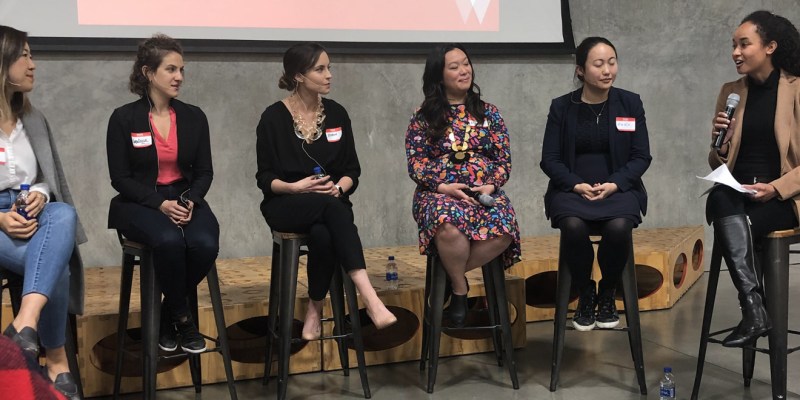Parallel whiteboards with the questions “Where are you now?” and “Where are you going?” lined the walls of the d.school from Nov. 15-16 as Stanford Women in Design (SWID) hosted its second annual conference. The 2018 conference focused on the topic of Navigating Design, building on the previous year’s topic of the future of design.
Speakers from across the product design industry took part in the two-day conference, discussing topics such as the lack of female representation in design studios, the benefits of failure and the power of product design as a tool to solve some of the greatest problems of the century.
Level Design co-founder Nichole Rouillac delivered the conference keynote address on the night of Nov. 15. Rouillac began her talk by outlining the often harsh and isolating environment that she believes women face in the product design field, a perspective informed by her 15 years of experience in the industry.
“I spent most of my career being the only woman in the room,” Rouillac said. “I’m kind of getting tired of going around or having clients come to us and saying that they visited a bunch of studios, and it looks like they work in a frat house that’s filled with motorcycles, and there’s not a single woman at the table.”
Rouillac said this environment causes many women to leave product design, exacerbating the gender disparity that makes fields like industrial design some of the least diverse in all of the creative industries. She noted that, even when she was considering founding her own studio — armed with an accomplished portfolio that included working on the first Fitbit — she worried that “clients weren’t going to trust us, that we weren’t going to get paid what we should for the work that we did.”
What Rouillac first thought a weakness, however, soon turned out to be a strength.
“We now see that clients are coming to us because they look for a female voice,” she said.
This stratified environment is part of what prompted Morgan Mahlock ’17 to co-found SWID in 2016. While the club is intended to be inclusive and open to students of all genders, Mahlock said they wanted to maintain a focus on women.
“We targeted women to start because we wanted something really niche and supportive where we could do really targeted events, and they would have the highest amount of impact on a small amount of people,” she said.
At this year’s SWID conference, Mahlock moderated a panel of distinguished women with experience in fields across the design industry. Each panel member focused on how she navigated her career in product design and gave advice for new students of the field.
Robin McIntosh, co-founder and co-CEO of WorkIt Health, encouraged students to consider the path she took early in her career, saying “yes” to every opportunity presented to her.
“I understood that being in school, you’re in this safe environment in which you can fail,” she said. “If you can switch your way of thinking to a growth-mindset … it’s a lot easier to be brave.”
Other panelists focused on the benefits of learning through experience, saying it often takes experience in multiple jobs and environments to find what truly incites someone’s passion and intellectual curiosity. Xin Xin, senior product designer at One Medical Group, gave her take on how designers can project confidence at work while maintaining emotional intelligence and kindness.
“Disagreements make a product stronger,” Xin said. “You have to find a way to express disagreement … without coming off as really negative and really cold. I think it’s about striking a good balance with warmth but also authority.”
While advice and stories about careers in product design played a prominent role in the conference, Rouillac also gave audience members a call to action, calling them the future leaders of the field.
“If … we can figure out how to make a difference in people’s lives in what we’re bringing to the world, I think it’s time that we can take a look at our own industry and use our design problem-solving skills to figure out how we can actually create more female leadership and bring more women into our field,” Rouillac said.
As students left the conference, they were again flanked with whiteboards on both sides. However, the white boards now answered their earlier questions of “Where are you now?” and “Where are you going?” with a variety of responses, including single-words like “Far!” and “Forward,” as well as longer responses with specific plans for future design labs and workshops.
Contact Emma Smith at esmith11 ‘at’ stanford.edu.
